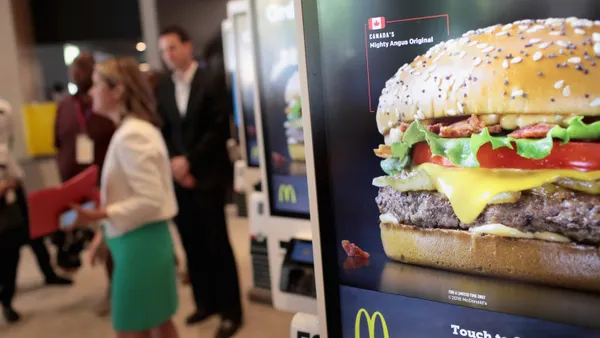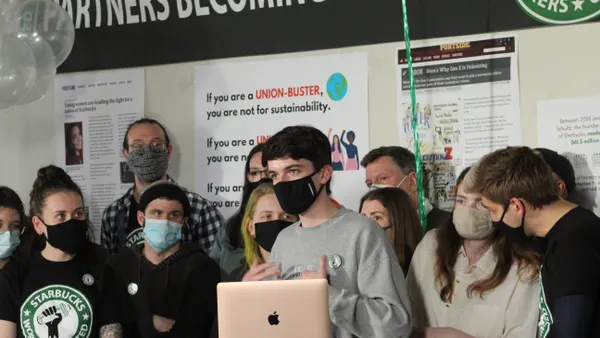Dive Brief:
- A new report from the Centers for Disease Control and Prevention finds that adults who have tested positive for COVID-19 were approximately twice as likely to have reported dining at a restaurant in the two weeks before becoming sick than study participants that tested negative for COVID-19. The study included 314 people who had COVID-19 symptoms and were tested for the virus, and about 50% tested positive.
- The report notes that "exposures and activities where mask use and social distancing are difficult to maintain, including going to places that offer on-site eating or drinking, might be important risk factors for acquiring COVID-19," adding that "masks cannot be effectively worn while eating and drinking." Participants reported mostly similar activities in the two weeks before testing, such as going to church and the gym.
- This news follows recent state measures to bring back or increase dining capacity as a way to help restaurants increase sales and survive the pandemic. Pennsylvania restaurants, for example, can double their dining room capacity to 50% starting Sept. 21 with online certification, and New York City restaurants can reopen their dining rooms at 25% beginning Sept. 30.
Dive Insight:
The timing of this report could throw a major wrench into reopening plans underway in locations like California, New Jersey and New York City. Restaurant groups agree that bringing back indoor dining is a key component to the restaurant industry's recovery, especially as cooler months approach.
While a number of restaurants have expanded outdoor dining service to survive the summer, the CDC's assessment did not make clear if study participants ate inside restaurant dining rooms or on patios, and did not distinguish risk factors between indoor and outdoor dining, which could represent different levels of potential exposure.
Regardless, another major part of the industry's recovery is consumer confidence in eating at restaurants again, and this report could seriously undermine diner desire to eat on premise. The CDC’s findings echo a similar report from JP Morgan published in June, which found that higher restaurant spending in a state was linked to a faster spread of the coronavirus about a month after. Nearly one in four consumers say they won't be ready to dine out until there's a vaccine.
As part of the report, the CDC recommends "community mitigation strategies," including "efforts to reduce possible exposures" at locations like restaurants. On Sept. 6, the agency updated its "Considerations for Restaurants and Bars" guidance, which includes recommendations for hand hygiene, respiratory etiquette and personal protection equipment. The guidance also labels onsite dining for both indoor and outdoor dining without capacity reductions as "highest risk" of spread, and indicates that drive-thru, delivery, curbside pickup and takeout carry the lowest risk of possible infection.
Report co-author Dr. Todd Rice, an associate professor of medicine at Vanderbilt University Medical Center, said customers have a responsibility in mitigation as well, telling NBC News that people who are going out to eat "need to be thoughtful about how they're going to do it." That means, he adds, wearing a mask until the food arrives and sitting far away from the next table. He also said that when he dines out, he asks to eat outside.
Functioning on a combination of off-premise and outdoor business, which many diners are more comfortable with, has helped many restaurants stay afloat. Infectious disease experts have also said outdoor spaces with more ventilation are safer, but outdoor dining has been no silver bullet. Without government relief, for example, nearly 65% of restaurants in New York State may close by the end of this year, according to a survey by the New York State Restaurant Association.
The Association of Food and Drug Officials pointed out some cautions and concerns about the CDC's latest study a statement emailed to Restaurant Dive Thursday. The 10 states the report subjects lived in — California, Colorado, Maryland, Massachusetts, Minnesota, North Carolina, Ohio, Tennessee, Utah and Washington — have varying restrictions on restaurants. Control measures in these communities also varied, and the study doesn't clarify if participants with restaurant exposure were out in their communities more frequently. In short, this report has perhaps created just as many questions as answers for restaurants and customers alike.
Emma Liem Beckett contributed to this article.











